
The cost to carpet stairs depends on the number of stairs, material choice, and staircase type. Read on to calculate your project expenses
You may be floored by the differences


Opt for low-pile carpet in high-traffic areas like living rooms, dining rooms, and hallways.
Choose a high-pile carpet where you want extra comfort and a place to lounge.
High-pile carpet adds luxury, softness, and insulation, but low-pile carpet is more durable, less expensive, and better for those with indoor allergies.
Low-pile carpets range from $1 to $6 per square foot, while high-pile carpet costs $2 to $8 per square foot.
Every time you go to the doctor, they’re likely to make note of how tall you are. Would you believe someone does the same for your carpet? Pile height refers to the length of the carpet fibers, with low-pile carpet having shorter fibers and tighter loops and high-pile carpet having longer, taller fibers. Pile height impacts everything in a carpet, from the appearance and feel to the durability and ease of cleaning. Learn all about low-pile versus high-pile carpets and when to choose each.
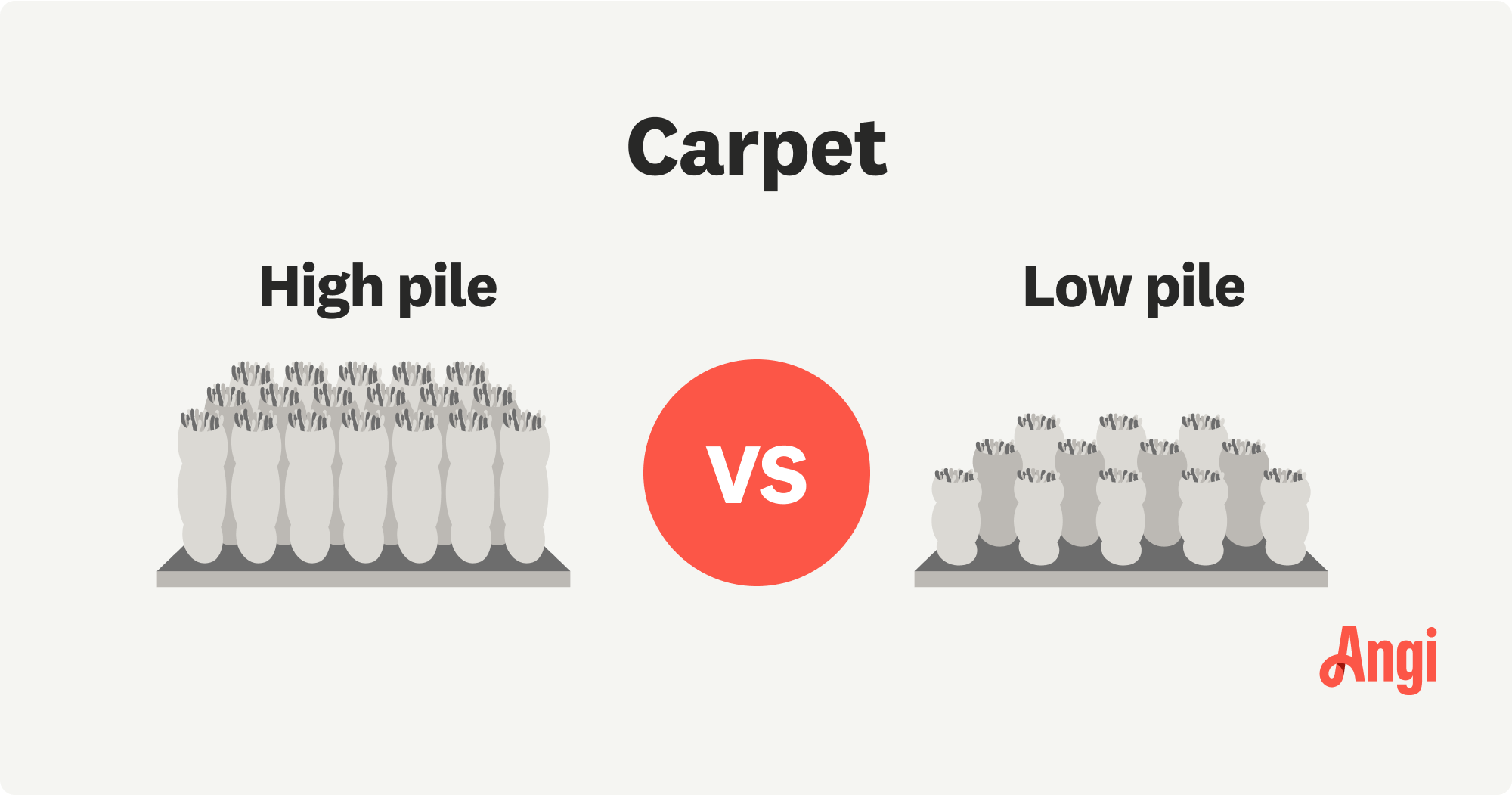
Low-pile carpet has shorter fibers and tighter loops. It also has a smooth surface, is durable, and is easy to clean. Low-pile carpet holds up well in areas with high traffic, such as the living room or dining room. High-pile carpet has longer fibers and is more plush, like a shag carpet. High-pile carpets are extra comfy and add insulation, but they’re more challenging to clean. They don’t hold up as well to traffic, so they’re best placed in low-traffic areas.
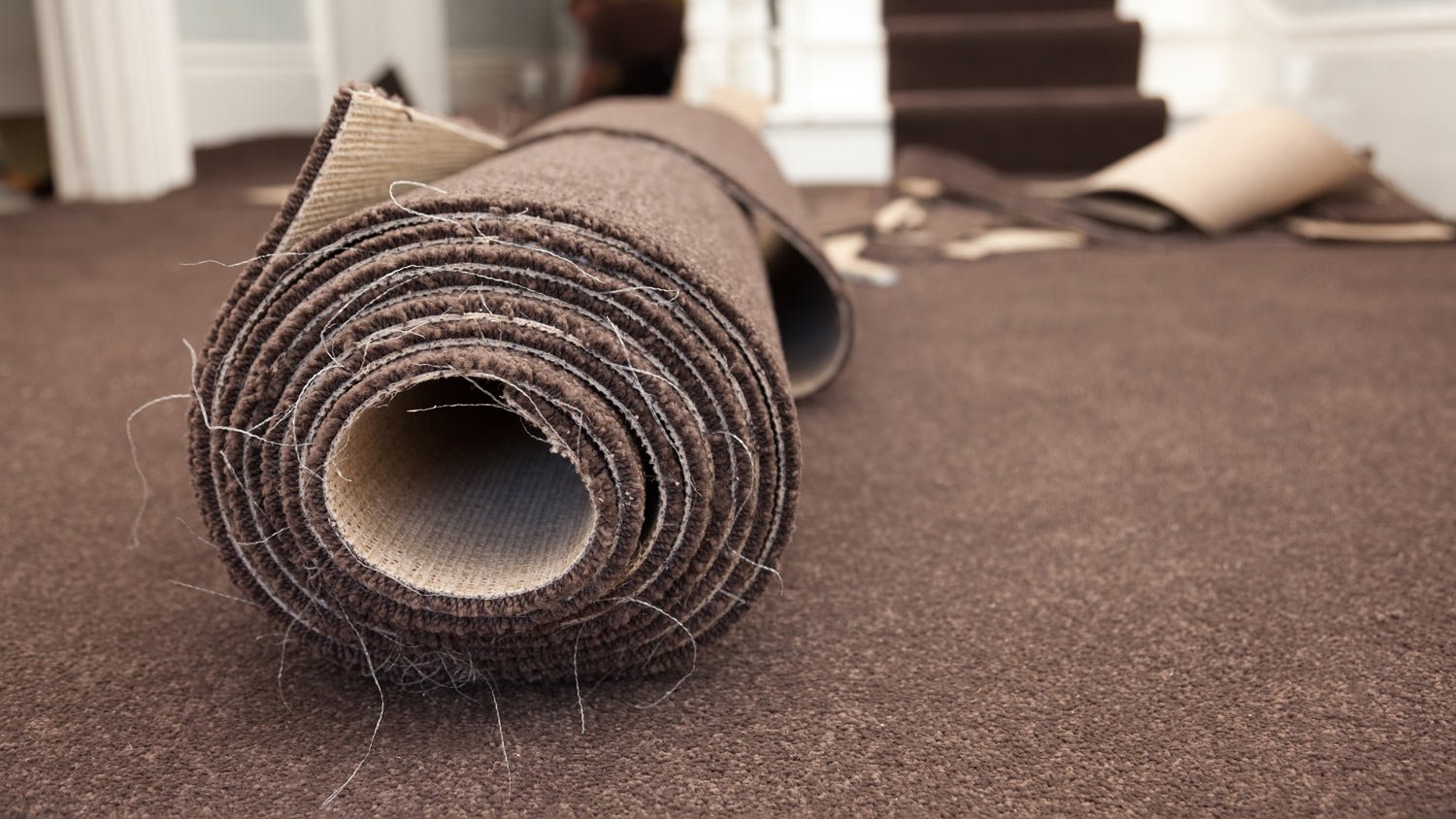
Low-pile carpet is carpet with short fibers and tight loops that are less than 1/4 of an inch tall. Low-pile carpet is dense and flat and offers a smooth surface. It’s durable and great for high-traffic areas. Low-pile is easy to clean because debris, dust, and spills have a harder time sticking in the short fibers. Low-pile carpet often has a modern look but isn’t as cozy and plush as high-pile carpet. The cost of low-pile carpet ranges from $1 to $6 per square foot, but the price also depends on the material and type of loop or cut.
| Pros | Cons |
|---|---|
| Easy to clean | Less plush appearance |
| Durable and long-lasting | May not feel as soft and comfortable |
| Reduces allergens | Can flatten over time |
| Less expensive than high-pile carpets | Less insulation |
Best for:
High-traffic areas such as living rooms, dining rooms, and family rooms
Playrooms, allowing for toys and chairs to move easily
Transition areas such as entryways, stairwells, and hallways
Allergy sufferers
Homeowners who like easy cleaning
Low-pile carpets are easy to clean, as dirt, debris, and spills can’t get lodged very deep like they can in high-pile carpets. A standard vacuum removes most dirt, debris, and allergens from low-pile carpets, making them great for those who suffer from allergies or don’t want to spend lots of time cleaning.
The dense, flat surface of low-pile carpet makes it durable even with lots of traffic. It also withstands furniture movement better than high-pile carpet and shows less denting from heavy furniture. Low-pile carpet lasts five to 15 years on average, but it can last up to 25 years with proper maintenance.
Low-pile carpet doesn’t look or feel as plush and fluffy as high-pile carpet. So, you can’t enjoy the soft, warm feel of the fibers between your toes. It often doesn’t appear as luxurious, which can impact your room’s overall aesthetic.
Low-pile carpets are more prone to flattening over time, especially in high-traffic areas. However, it’s important to realize that all carpets flatten eventually and that you’ll need to replace them within 15 to 20 years. Because of the shorter fibers, low-pile carpet offers less insulation than high-pile carpet. If you want to reduce the noise level in the room or add insulation to your flooring, consider a high-pile carpet over a low-pile one.

High-pile carpet features long fibers and taller loops, between 1/2 and 3/4 of an inch. High-pile carpets often look and feel luxurious, with a plush or shag quality to them. They help dampen noise and offer insulation. While high-pile carpets are soft and fluffy, they’re harder to clean and don’t hold up as well to traffic. High-pile carpet is often more expensive than low-pile carpet, but this isn’t always true because material and carpet type play a big role in pricing. High-pile carpet costs $2 to $8 per square foot on average.
| Pros | Cons |
|---|---|
| Soft and cozy feel | Difficult to clean |
| Offers warmth and insulation | Doesn’t hold up as well to lots of traffic |
| Luxurious appearance | Traps more allergens |
| Dampens noise | More expensive than low-pile carpet |
| Less likely to flatten |
Best for:
Rooms with a cozy environment, such as a bedroom or nursery
Low-traffic areas where your family gathers, such as a family room or den
Rooms where you want to enhance the flooring aesthetic
High-pile carpet is often lush and cozy. It makes for an extra comfy environment when relaxing and lounging, and it feels lavish under bare feet. High-pile carpet offers warmth and extra insulation because the longer fibers hold in heat better. High-pile carpet also absorbs more noise, such as footsteps or voices at a party.
High-pile carpet can heighten a room's aesthetic with its lush texture. If you want to create a high-end look in a cozy area of your home, look no further than a high-pile carpet. Although it has taller loops, high-pile carpet is less likely to flatten than low-pile carpet. It retains its shape and style over time unless it’s overused and worn down.
Because of the depth and taller fibers, it’s hard to remove debris, dirt, allergens, and pet hair from high-pile carpets. You’ll need an upholstery attachment for your vacuum cleaner and dry carpet shampoo to keep it clean. High-pile carpet also lacks the density and resilience of a low-pile carpet. Too much traffic can cause a high-pile carpet to look worn and faded. Opt for high-pile carpet only in low-traffic areas to avoid this issue.
When deciding between high-pile versus low-pile carpet, consider the main factors that matter to you, whether that’s budget, durability, aesthetics, or something else. Here’s a breakdown of key considerations to help you choose the best carpet for your home.
Both low-pile and high-pile carpets come in a range of materials, patterns, styles, and colors—and both can look phenomenal. However, high-pile has the edge due to its plush, luxurious look. High-pile carpet often adds to a room's aesthetic instead of fading into the background.
Because of its density and smooth surface, low-pile carpet is more resilient to traffic. Compared to high-pile carpet, it can withstand more wear and tear. If you want a carpet that’ll hold up to high traffic for years, opt for low-pile carpet.
If you imagine sinking into deep, plush flooring, a high-pile carpet is the route to take. A high pile gives more warmth and coziness to a space, and it also dampens sounds and provides insulation.
Low-pile carpet costs less per square foot than high-pile carpet. Fewer materials and less time goes into making low-pile carpet, hence the lower price. However, the cost also depends on the material and carpet type. Some high-pile carpets can be affordable, but you might be more limited on materials, colors, and patterns.
A professional should install both high-pile and low-pile carpet to ensure even flooring, cohesive seams, proper padding, and a durable, tight installation. Hire a local carpet installer to handle carpet installation for you, no matter the pile height. It could be tempting to go without it, but carpet padding is beneficial to a long-lasting installation.
A room with low-pile carpet allows you to move furniture, toys, and other objects with ease. Your table legs and bed frame won’t snag on the carpet like they would with high-pile carpet. Heavy furniture can also crush the fibers in a high-pile carpet. While low-pile can also show furniture dents, they tend to be less noticeable.
If someone in your home has indoor allergies, opt for low-pile carpet. Dust, debris, and pet hair are far easier to remove on low-pile than high-pile carpet. High-pile carpets trap allergens, potentially leading to more symptoms and flare-ups.
It’s easier to vacuum low-pile carpet and suck everything out of the fibers. Most vacuums clean low-pile easily, whereas you’ll need an upholstery attachment for high-pile carpet. It’s also easier to dab out stains and spills on low-pile versus high-pile carpet. If you want to spend less time cleaning and maintaining your flooring, low-pile is the way to go.
Carpet holds up for five to 15 years on average, but it can last up to 25 years. Low-pile carpet tends to hold up better over time due to its density, structure, and ease of cleaning. High-pile carpets can also last 15 or more years, but not in high-traffic areas. The material of the carpet also impacts longevity.
Both carpets can add resale value to a home if they’re clean and in good shape. Choose the right pile for the right locations to improve potential ROI: low-pile carpet in high-traffic areas and high-pile carpet in low-traffic areas that warrant extra coziness.
Was able to squeeze me in for a carpet repair & cleaning, did amazing work and highly recommend Nestor. Very friendly, knows the trade, and great pricing.
Very prompt and professional communication. Outstanding job on the carpet cleaning! They do a much better job and take more time to do a thorough cleaning. Will definitely use them again.
Great. Dale Hall (aka Robbie) the installer was excellent.
Our installers were prompt, courteous, and careful of our new wood floors. They did a good job on the carpet, which is just what we wanted, color and style.
InstaDry cleaned my carpeting two years ago, and I scheduled another appointment with them for May 23, 2015. The technician, Don Snyder, was on time, courteous, listened to what I had to say, did what needed to be done and did it very well. The carpet is DRY when the tech leaves and it has...
We moved all of the furniture for the cleaner. It looked very pretty when he was finished. He got through fairly quickly. He said it would be dry by that night, but it took 3 days to dry, but that was ok. Within about a week the spots came back, but I think that is just the nature of carpet...
He comes and does our carpet once a year. They do the whole house, stairs and everything. It's a family operation and he has his daughter with him. I'm amazed by the care that they take and they are just very professional. I've had my carpet cleaned by other people and I just feel good...
I only had one room to carpet clean and Dan was able to quote a price for just the area needed. Every other service I called wanted a minimum 3-room price which was much more expensive and more than I required. Dan arrived a few minutes before the appointment and completed the work...
From average costs to expert advice, get all the answers you need to get your job done.

The cost to carpet stairs depends on the number of stairs, material choice, and staircase type. Read on to calculate your project expenses
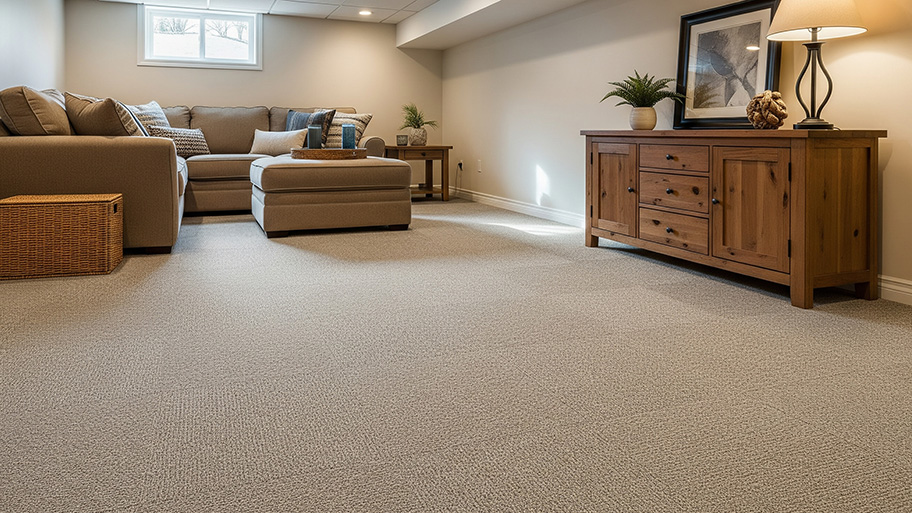
Not only are carpet tiles easier to install than carpet, but they’re often more affordable. So, how much does carpet tile installation cost? Let’s take a look.
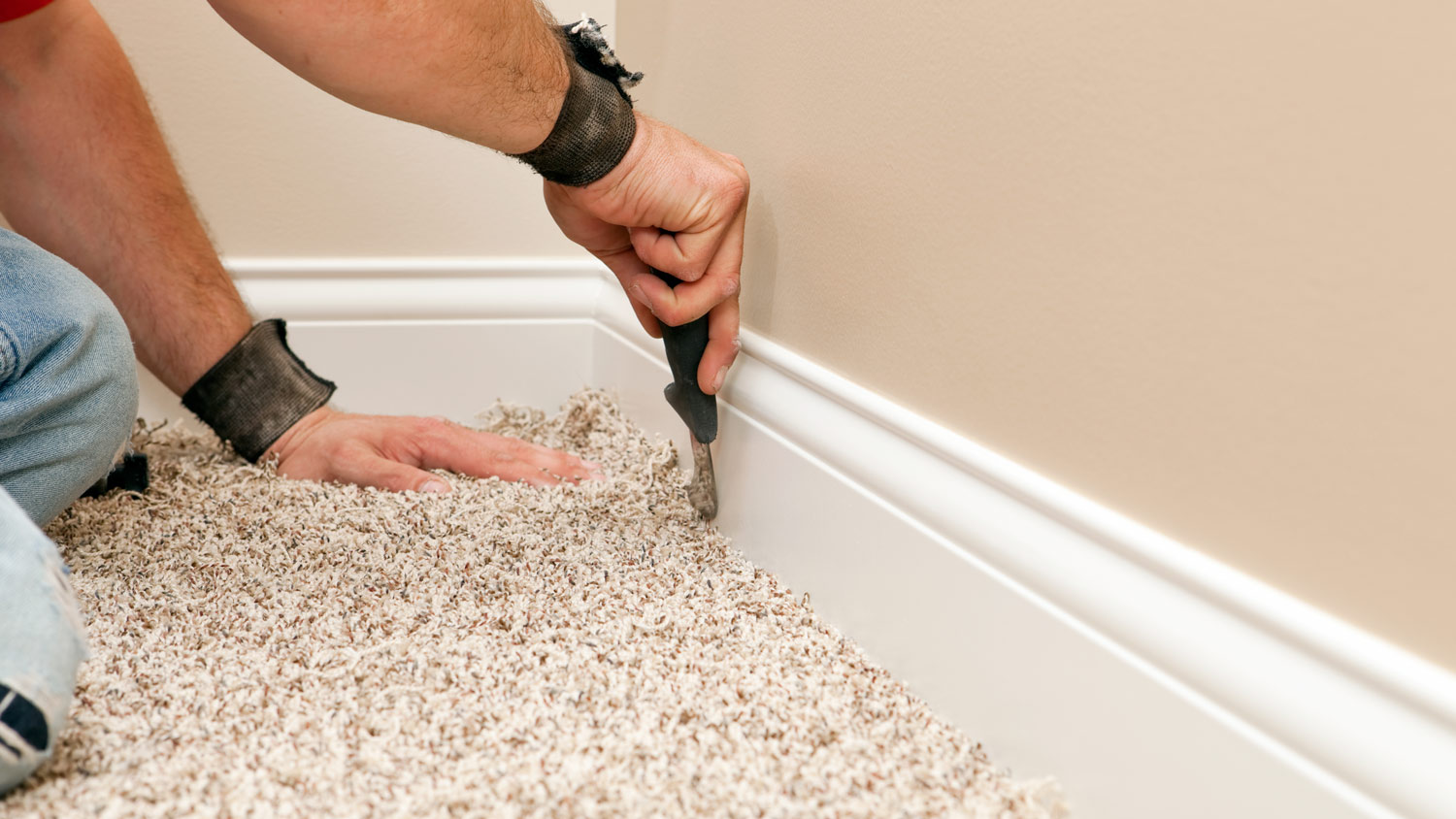
Get a clear estimate for carpet repair cost. Learn what impacts pricing, compare repair types, and find ways to save on your next carpet project.

Carpet tiles are easy to install and cost less than traditional carpets. This guide shows you how to install carpet tiles for a quick and easy room refresh.
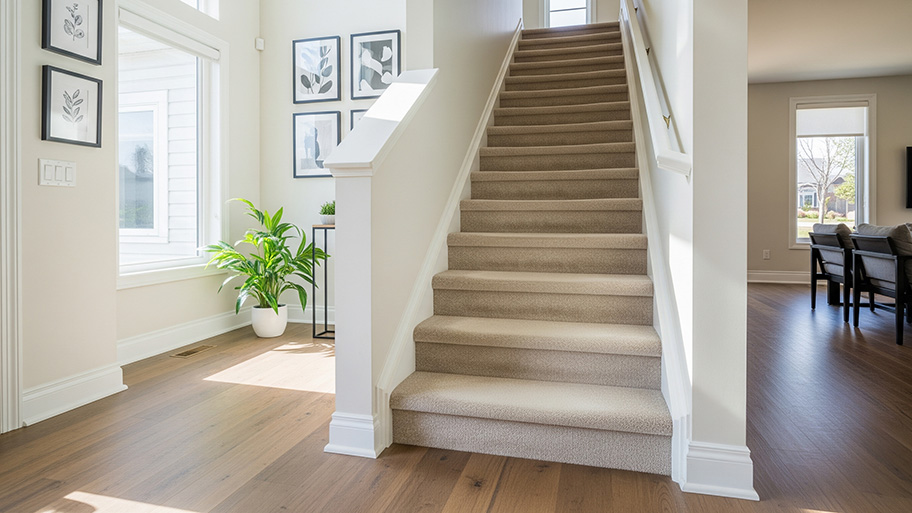
Slippery carpet stairs could get you down—literally. Fortunately, these five tips will keep your steps nice and steady, even if you keep the carpet.
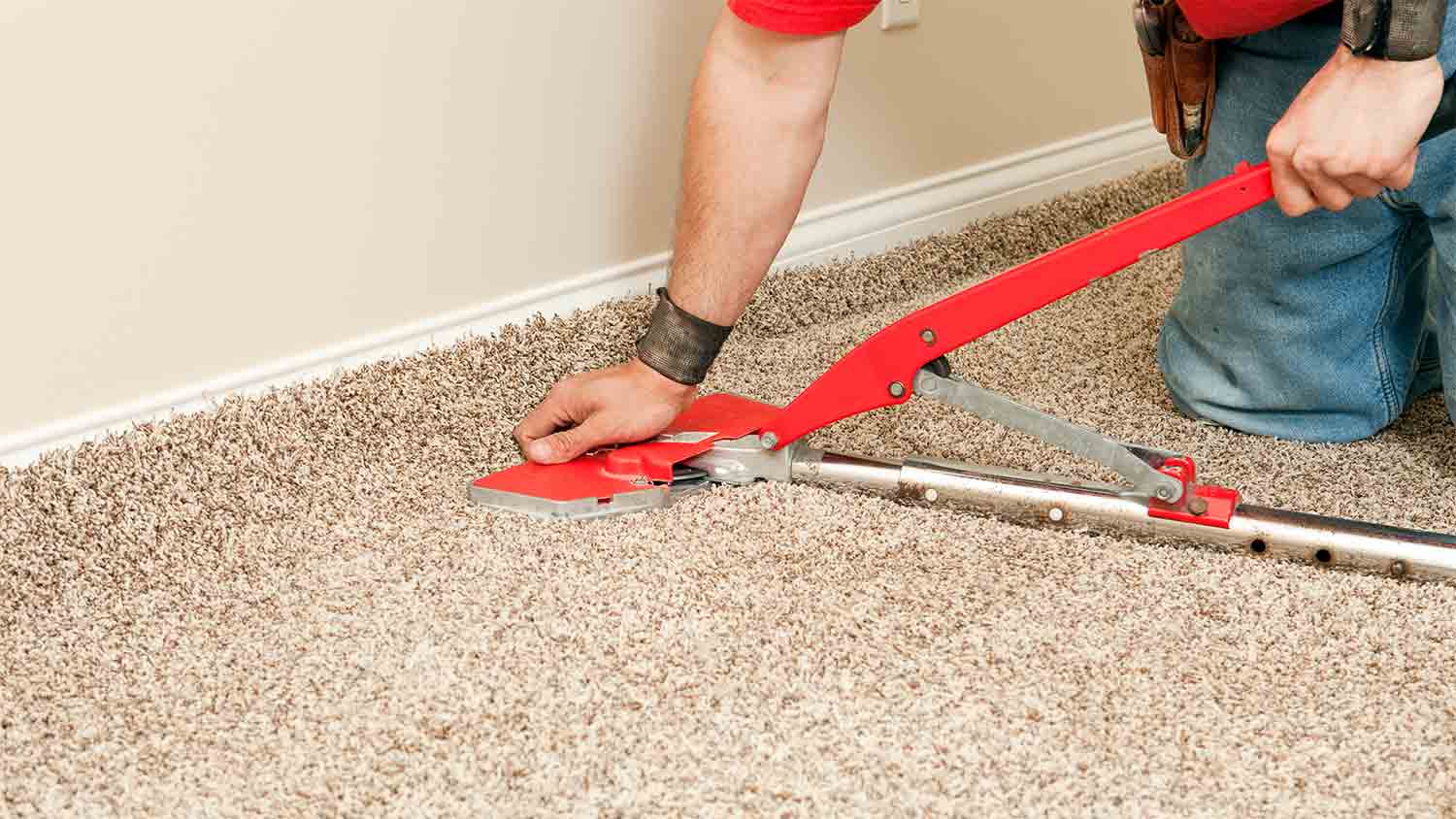
Wondering how much carpet stretching costs? Get prices, key cost factors, and tips to help you budget for your carpet stretching project.